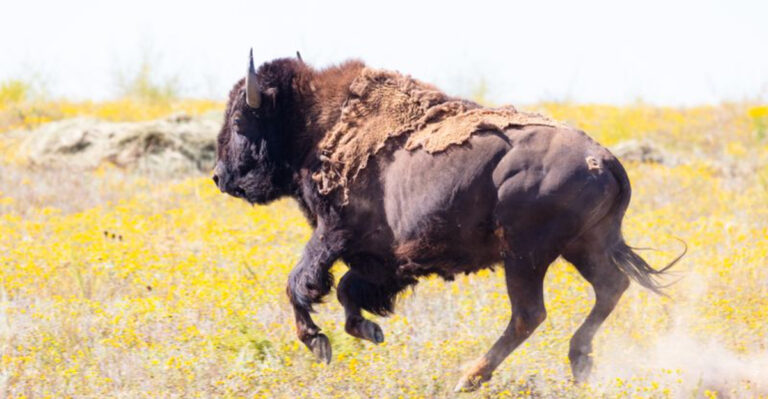Fewer Than 100 Ocelots Remain In The U.S., Can Scientists Save Them In Time?
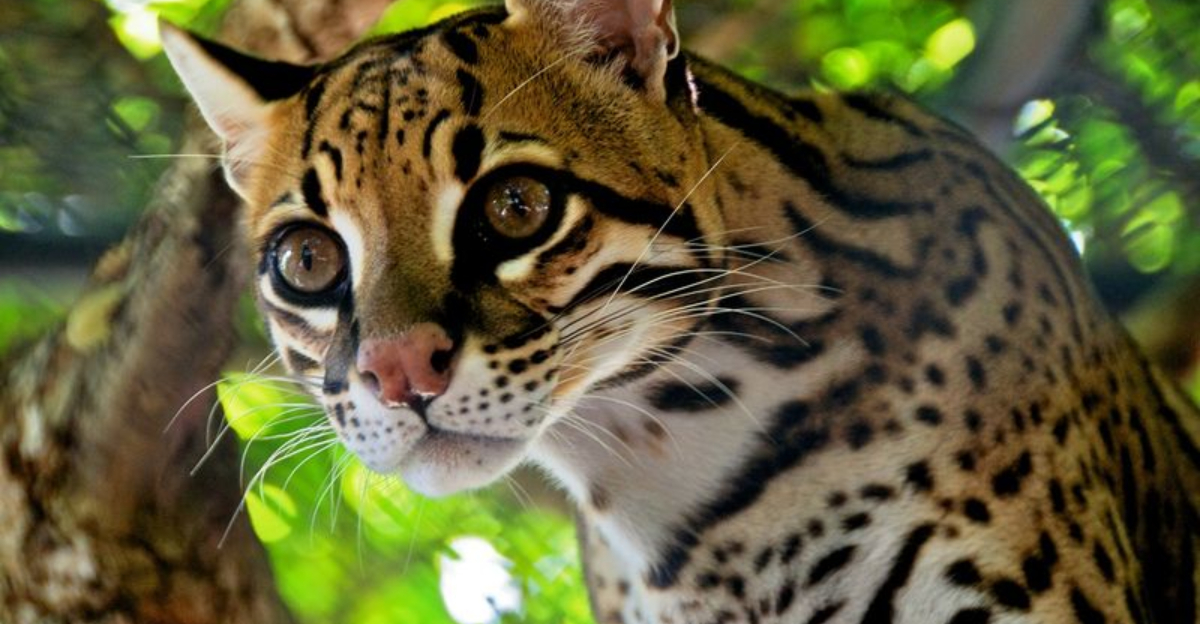
The ocelot, a striking wild cat with distinctive spotted fur, faces a dire situation in the United States. With fewer than 100 individuals remaining in the wild, primarily in southern Texas, these magnificent creatures are teetering on the brink of extinction.
Scientists are racing against time to implement conservation strategies that could save this native species before it disappears from American soil forever.
1. The Last American Stronghold
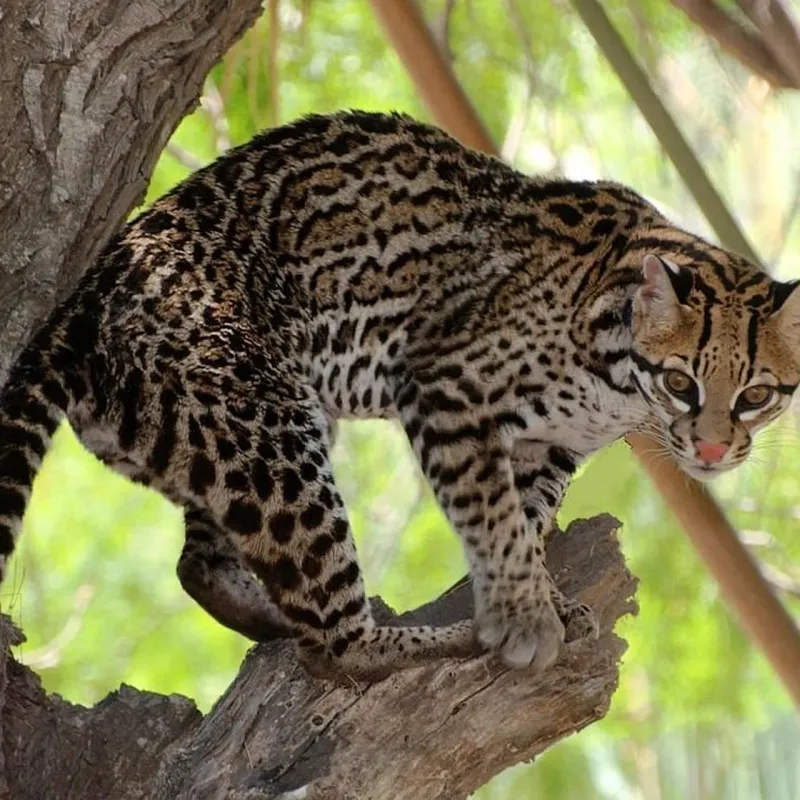
Deep in the thornscrub forests of South Texas, a tiny population of wild ocelots makes their last stand on U.S. soil. These elusive cats now live primarily on private ranches and protected lands in the Lower Rio Grande Valley.
Most Americans have never seen one in the wild – and might never get the chance if conservation efforts fail. Researchers estimate fewer than 100 remain, with most concentrated in two isolated populations.
2. Spotting The Difference

Ocelots sport unique coat patterns – like feline fingerprints – that help researchers identify individuals. Their gorgeous tawny fur features black spots and rosettes unlike any other North American wild cat.
Smaller than bobcats but larger than house cats, these medium-sized felines weigh 15-35 pounds. Their distinctive markings evolved as perfect camouflage for hunting in dappled forest light, making them nearly invisible when motionless.
3. Roadkill Reality
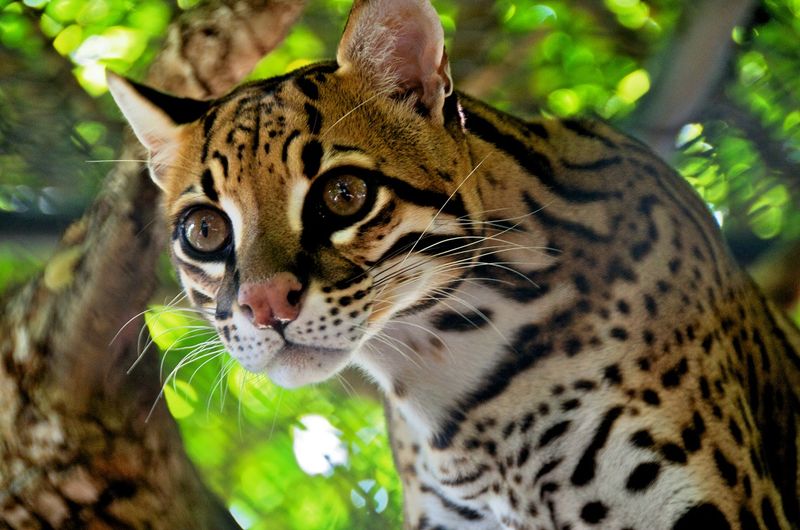
Vehicle collisions represent one of the deadliest threats to America’s remaining ocelots. When these cats attempt to cross highways that fragment their habitat, they often pay with their lives.
Each death is devastating for such a small population. Between 1982 and 2020, at least 35 ocelots were killed on Texas roads – an alarming number when fewer than 100 exist. Wildlife underpasses offer hope, creating safe passage beneath busy thoroughfares.
4. Habitat Havoc

Ocelots require dense thornscrub forests with 95% canopy cover – habitat that’s vanished across most of Texas. Agricultural expansion, urban development, and border infrastructure have eliminated about 95% of their historical range.
These cats can’t adapt to open areas or fragmented landscapes. They need connected corridors of thick vegetation for hunting, raising young, and finding mates. Conservation now focuses on protecting remaining habitat patches and restoring degraded areas.
5. Genetic Bottleneck
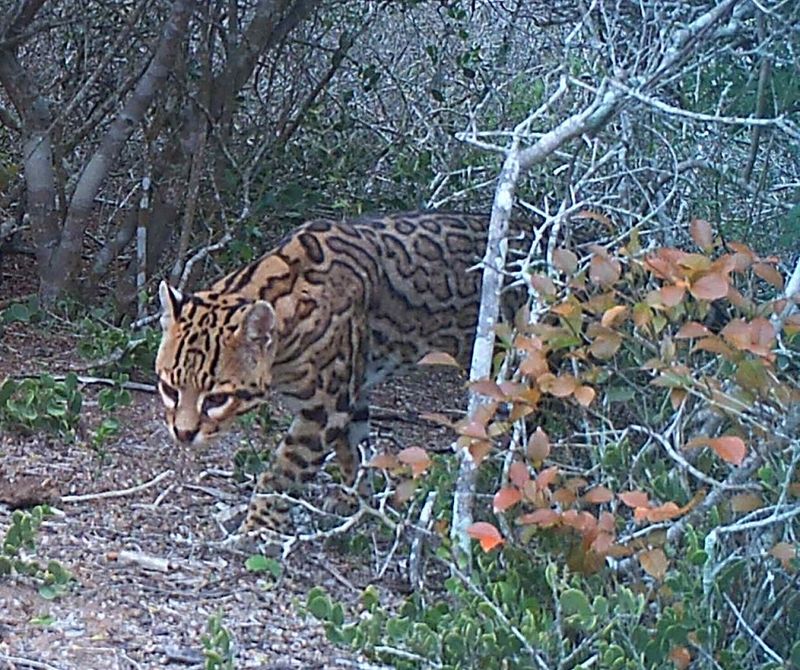
America’s ocelots face a genetic crisis. With such a tiny population divided into two isolated groups, inbreeding has become unavoidable. DNA analysis reveals alarmingly low genetic diversity.
This genetic bottleneck threatens their survival by reducing resistance to disease and limiting adaptability to environmental changes. Scientists debate controversial solutions like translocating ocelots from Mexico or even using assisted reproduction techniques to introduce fresh genes.
6. Camera Trap Chronicles
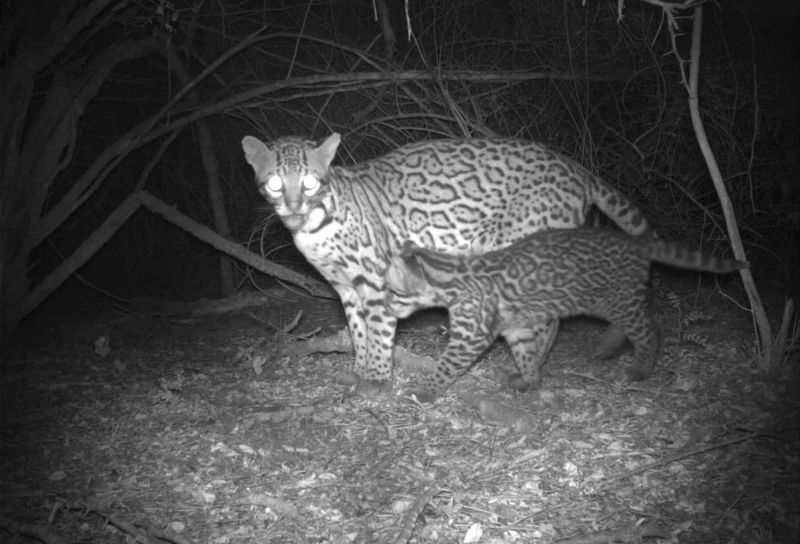
Motion-triggered cameras hidden throughout ocelot territory have revolutionized research efforts. These unobtrusive devices capture rare glimpses into the secret lives of these notoriously shy cats.
Scientists use the distinctive spot patterns to identify individuals, track movements, and estimate population size. The cameras have documented behaviors rarely witnessed by human eyes – hunting tactics, courtship rituals, and mothers with kittens navigating their shrinking world.
7. Border Wall Barriers
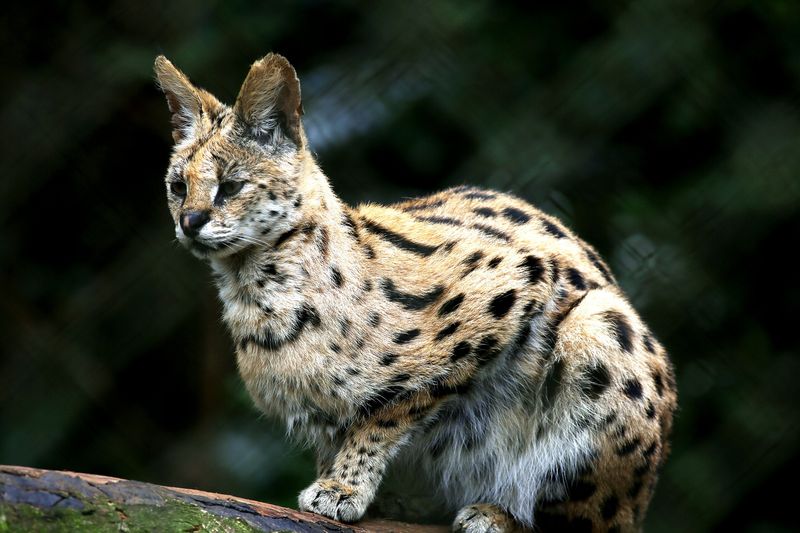
Border infrastructure creates impenetrable barriers for ocelots attempting to move between U.S. and Mexican populations. The solid walls prevent genetic exchange with larger Mexican populations that could revitalize the dwindling U.S. gene pool.
Conservation biologists have advocated for wildlife crossings or permeable sections in border barriers. Without connectivity to Mexico’s healthier ocelot populations, U.S. cats may be genetically doomed despite other conservation successes.
8. Rancher Relationships
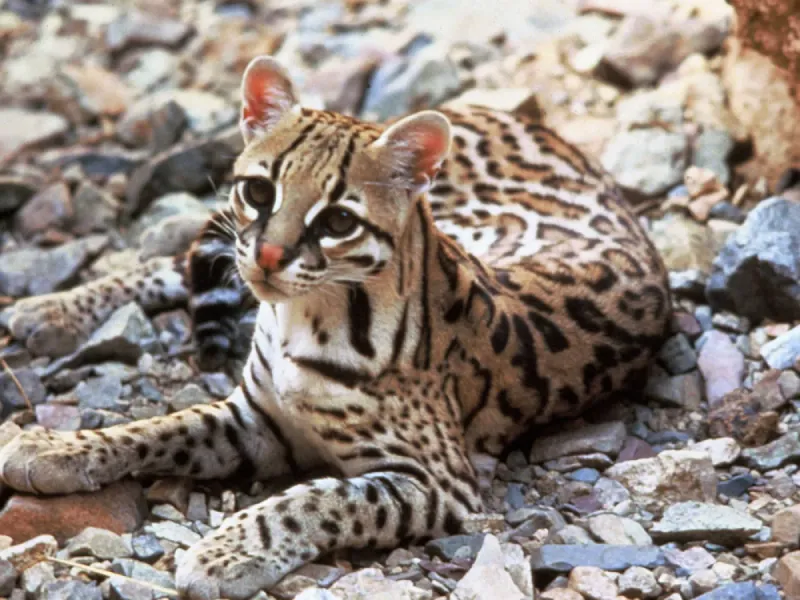
Many remaining ocelots live on private Texas ranches, making landowner cooperation essential for their survival. Innovative conservation programs now partner with ranchers instead of alienating them.
Some landowners receive incentives for protecting ocelot habitat through conservation easements. Others participate in monitoring programs, allowing researchers access to track cats on their property. These partnerships have transformed potential adversaries into crucial allies in the fight against extinction.
9. Captive Insurance Policy
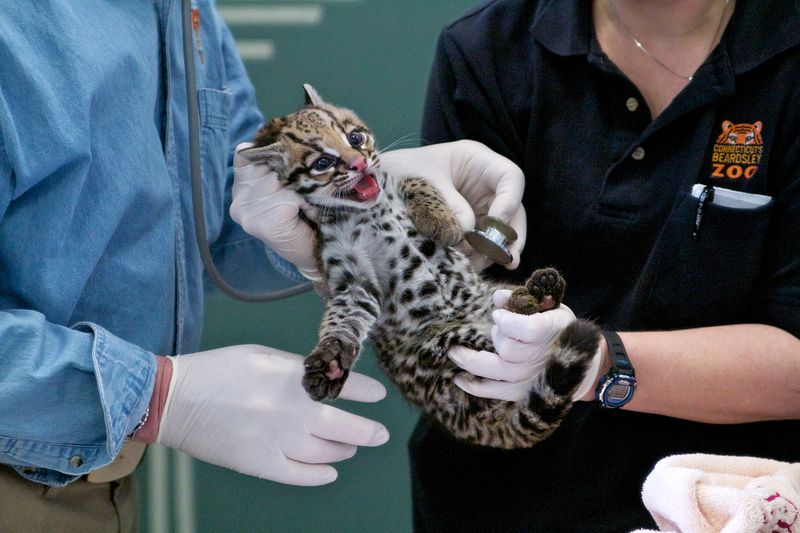
A small population of ocelots lives in American zoos, serving as a genetic reservoir should wild populations collapse entirely. The Association of Zoos and Aquariums maintains a Species Survival Plan to manage their breeding.
While reintroduction remains challenging, these captive cats represent a last-resort insurance policy against total extinction. Some conservation biologists advocate creating a breeding program specifically focused on preserving genetics of the U.S. population.
10. Climate Change Complications
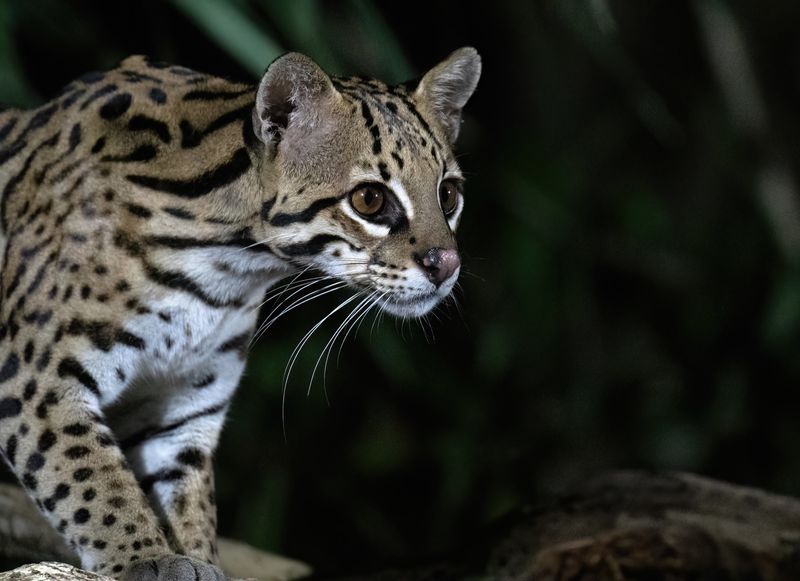
Rising temperatures and changing rainfall patterns threaten to transform the Texas ecosystems ocelots depend on. Climate models predict more frequent droughts and intense storms that could devastate their habitat.
These cats evolved for specific environmental conditions that are rapidly shifting. Researchers worry that even if other conservation efforts succeed, climate change could ultimately render their remaining habitat unsuitable, forcing difficult conversations about managed relocation to new areas.
11. Corridor Connections

Wildlife corridors represent a lifeline for isolated ocelot populations. These protected pathways of suitable habitat allow cats to move safely between fragmented habitat patches.
Conservation organizations are working to purchase strategic land parcels that could connect existing populations. Some corridors require habitat restoration – planting native vegetation and removing invasive species. Without these crucial connections, small isolated populations face genetic deterioration and higher extinction risk.
12. Scientific Tracking Technologies

GPS collars provide unprecedented insights into ocelot movements, revealing how they navigate increasingly fragmented landscapes. These lightweight devices transmit location data that helps scientists identify critical habitat and dangerous road crossings.
Collaring requires carefully trapping cats without injury – a delicate operation when handling such rare animals. The data collected has proven invaluable, showing some males travel surprising distances seeking mates and territory, sometimes crossing areas previously thought unsuitable.
13. Public Awareness Campaigns
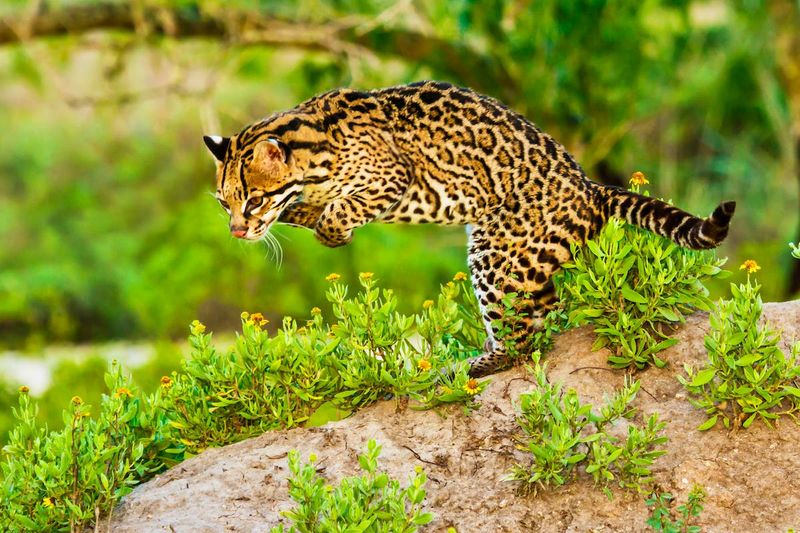
Most Americans don’t realize a wild, exotic-looking cat still roams U.S. soil – or that it’s nearly gone. Conservation groups have launched education initiatives to raise the ocelot’s profile and build support for protection efforts.
School programs in Texas teach children about their rare feline neighbors. Social media campaigns share camera trap footage, introducing these secretive cats to wider audiences. Increased public awareness translates to political support for conservation funding and protective policies.
14. Recovery Plan Roadmap

The U.S. Fish and Wildlife Service maintains an ocelot recovery plan – the official roadmap for saving the species. This comprehensive document outlines specific actions needed to prevent extinction and eventually remove ocelots from the endangered species list.
The ambitious plan calls for establishing three separate populations of at least 75 breeding adults each. Current efforts focus on habitat protection, reducing road mortality, and research. Critics argue the plan needs updating to address new threats and incorporate recent scientific findings.


